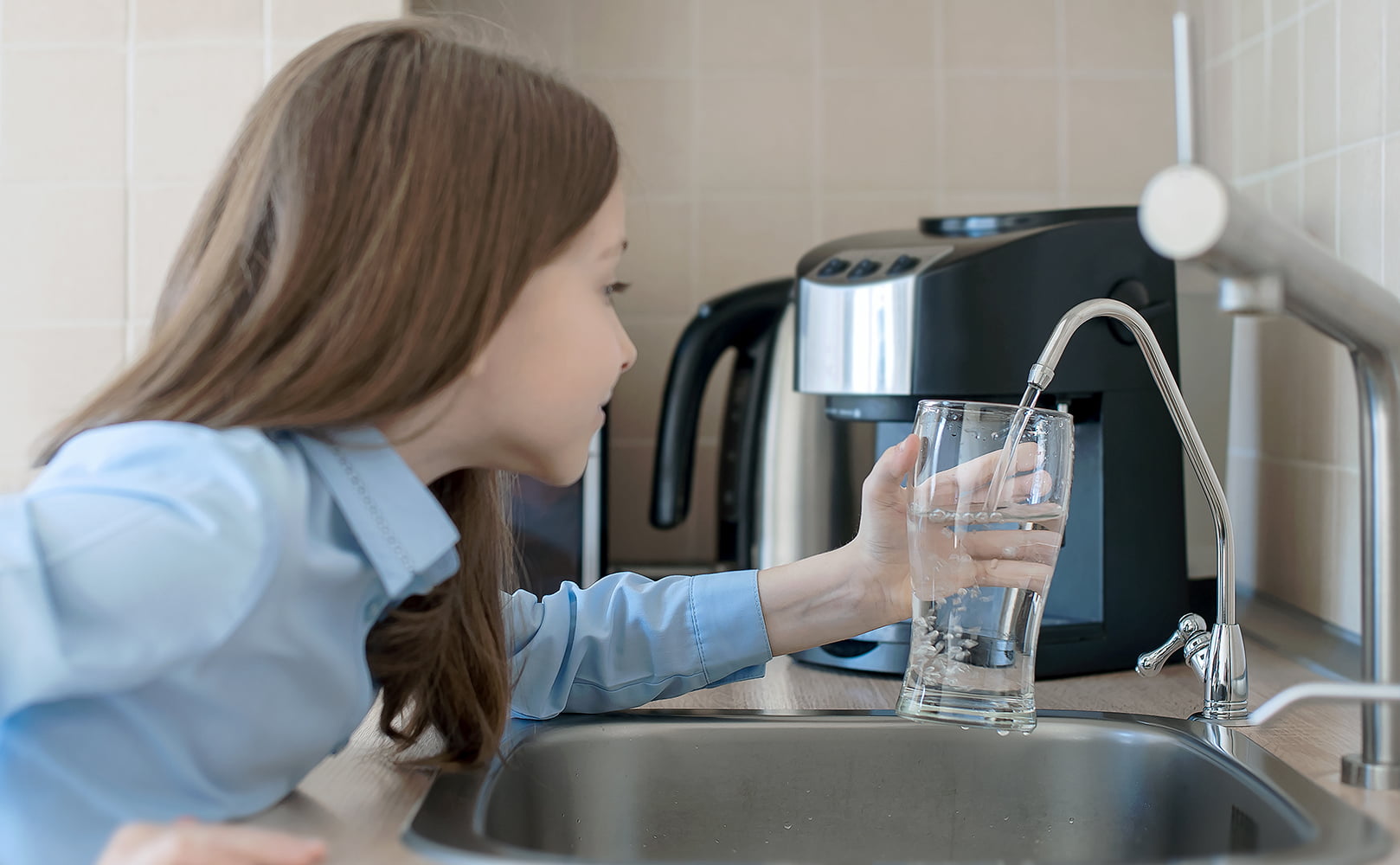Reverse Osmosis Faucet Hole Size – What Diameter Is Required?
Written by: Gene Fitzgerald // Last Updated: Feb 14, 2023
This page may contain affiliate links. If you buy a product or service through such a link we earn a commission at no extra cost to you. Learn more.
When preparing to install a reverse osmosis faucet in your kitchen, one of the most important things to check is whether you can cut an appropriately sized hole through your sink or countertop.
Alternatively, you may be able to reuse an existing hole, but this depends on its size and location.
That said, what is the minimum, ideal, and maximum required reverse osmosis faucet hole size?
Key Takeaways
- A non-air gap reverse osmosis faucet requires a hole size that’s at least 7/16” in diameter, though some models might require a larger opening.
- 1¼” in diameter is the maximum hole size working with most regular RO faucets.
- Air gap reverse osmosis faucets need 1¼” minimum.
Reverse Osmosis Faucet Hole Size – What Diameter Is Required?
Thankfully, the sizes of reverse osmosis faucets are standard across the board, and you’ll only need to consider whether you’re installing an air gap model or a non-air gap one.
RO Drinking Water Faucet Hole Sizing
If you’re using a regular reverse osmosis faucet without an air gap, you’ll need a hole that’s at least 7/16” in diameter. The maximum hole size should not exceed 1¼” in diameter. And just to be on the safe side, you should measure your model carefully to avoid drilling a hole that’s too large.
If you have an air gap reverse osmosis faucet, you should go for a 1¼” hole by default to accommodate all the different tubing.
Drilling Through Steel, Porcelain, and Other Countertop Materials
Drilling a hole for your faucet is relatively simple, as long as you follow the necessary precautions for the material you’re working with.
For a steel countertop, the process is pretty straightforward. You start with a 1/4″ drill bit and create the initial opening (mark with center punch if needed), after which you start using progressively larger bits to increase the hole size.
For other types of materials – like porcelain, ceramic and enamel – you should be more careful and drill as gently as possible. Stop drilling with the initial bit as soon as you see it poking through, then switch to a larger bit and continue to enlarge the hole.
What If I Don’t Want to Drill a Hole for My RO Faucet?
Not everyone is okay with drilling a hole through their countertop. Good news: There might be a workaround:
Working with Existing Holes
If you already have a hole in your sink/countertop from another fixture, check if you can use that directly. It’s all a matter of how large the hole is and where it’s located. Sometimes, you’ll run into the unfortunate situation where the hole is technically large enough but is tucked too far away to be useful.
Also, if your kitchen sink has three or more holes at the bottom and you’re using a faucet with just a single hole, you might be able to remove the sink’s base plate and thus add two extra holes. You can use one for the RO faucet, and another one for a soap dispenser or something similar.
Connecting Your RO System to the Refrigerator or Ice Maker
If you’re connecting your reverse osmosis system directly to a refrigerator or ice maker, you won’t even need to install a dedicated faucet. You can just get a connection kit and hook up the system to the appliance directly.
Replacing the Regular Kitchen Faucet with a Triple Faucet
A triple water faucet is a more advanced version of a regular kitchen faucet which combines three separate water lines – one for unfiltered cold water, one for unfiltered hot water, and one for filtered RO water.
There are many different styles and configurations to pick from here, and it’s important to carefully check the size of the base plate. There are faucets that work with 1, 1½, and 1⅜ inch holes.
If you have any questions about RO faucet hole size please don’t hesitate to leave a comment below!
Information provided on BOS is for educational purposes only. The products and services we review may not be right for your individual circumstances.
We adhere to strict editorial guidelines. Rest assured, the opinions expressed have not been provided, reviewed, or otherwise endorsed by our partners – they are unbiased, independent, and the author’s alone. Our licensed experts fact-check all content for accuracy. It is accurate as of the date posted and to the best of our knowledge.


